Full text
PDF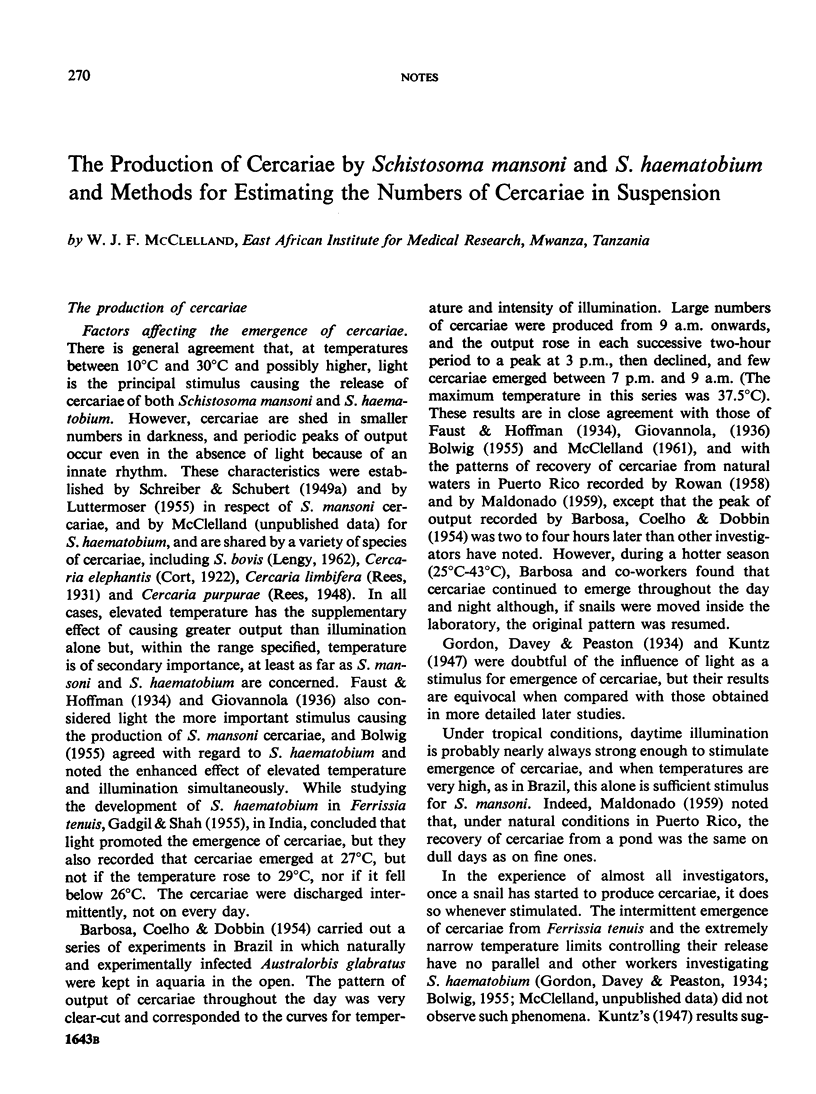
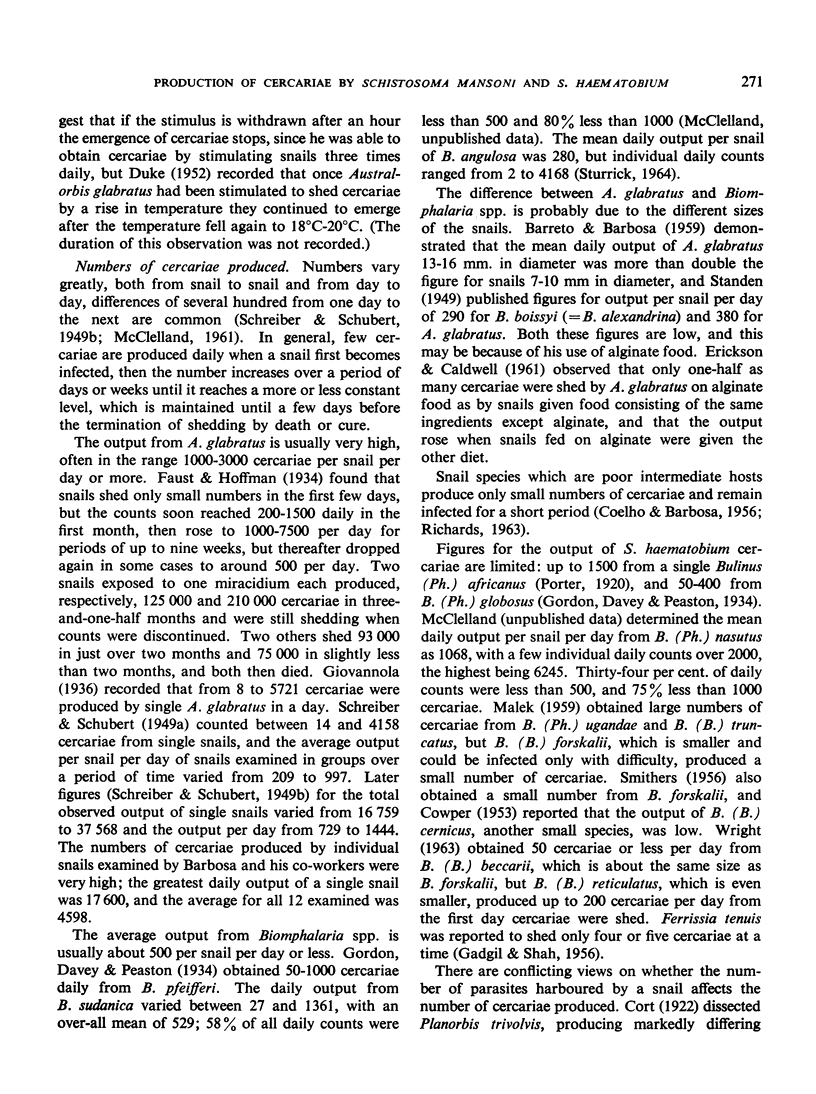
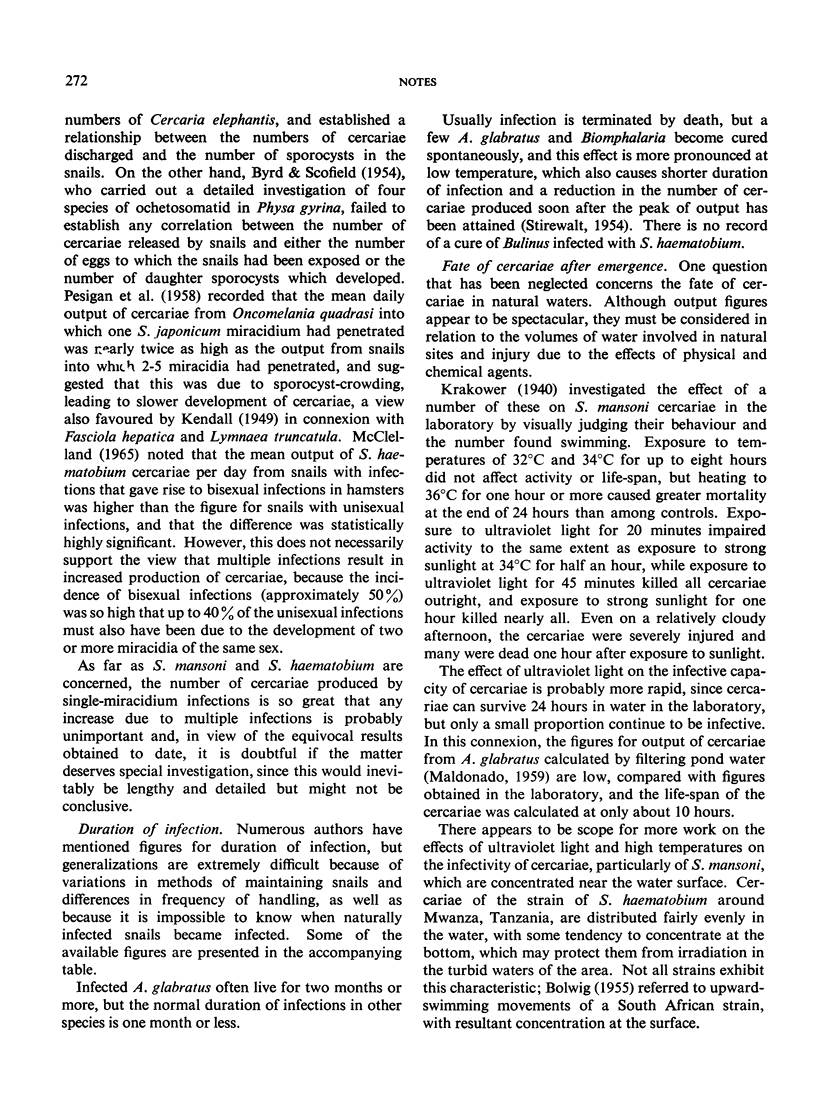
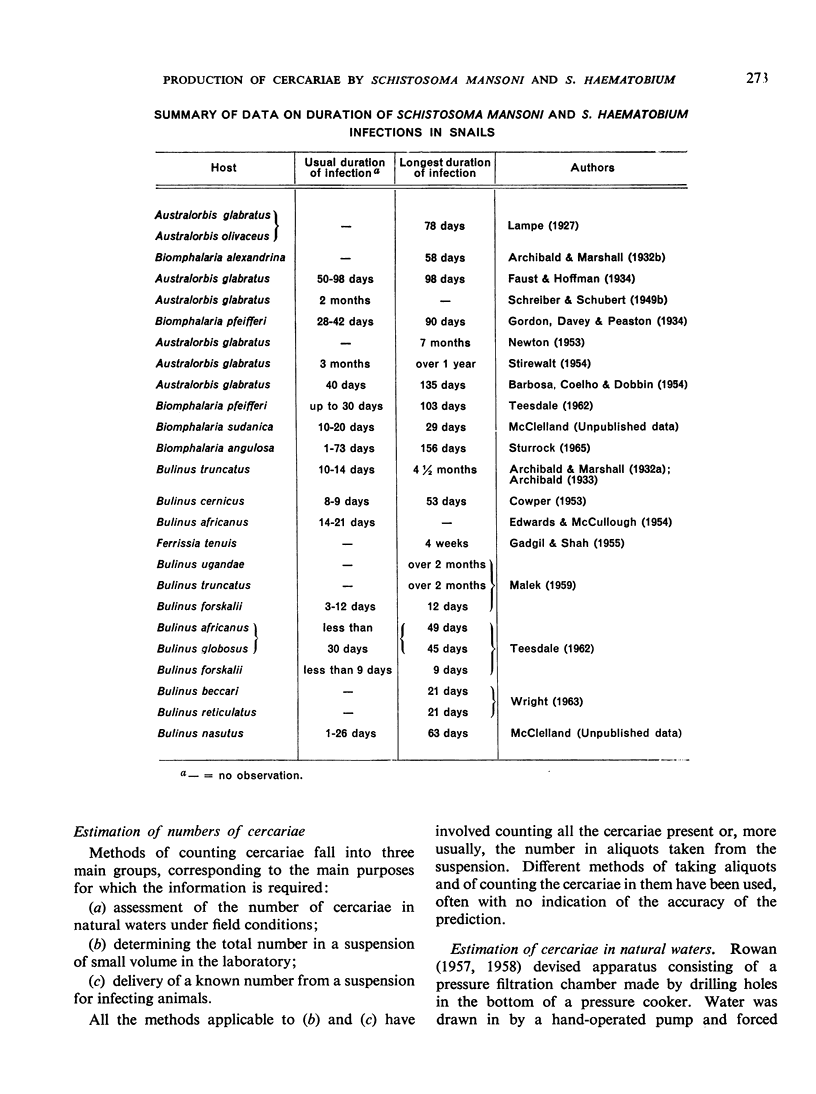

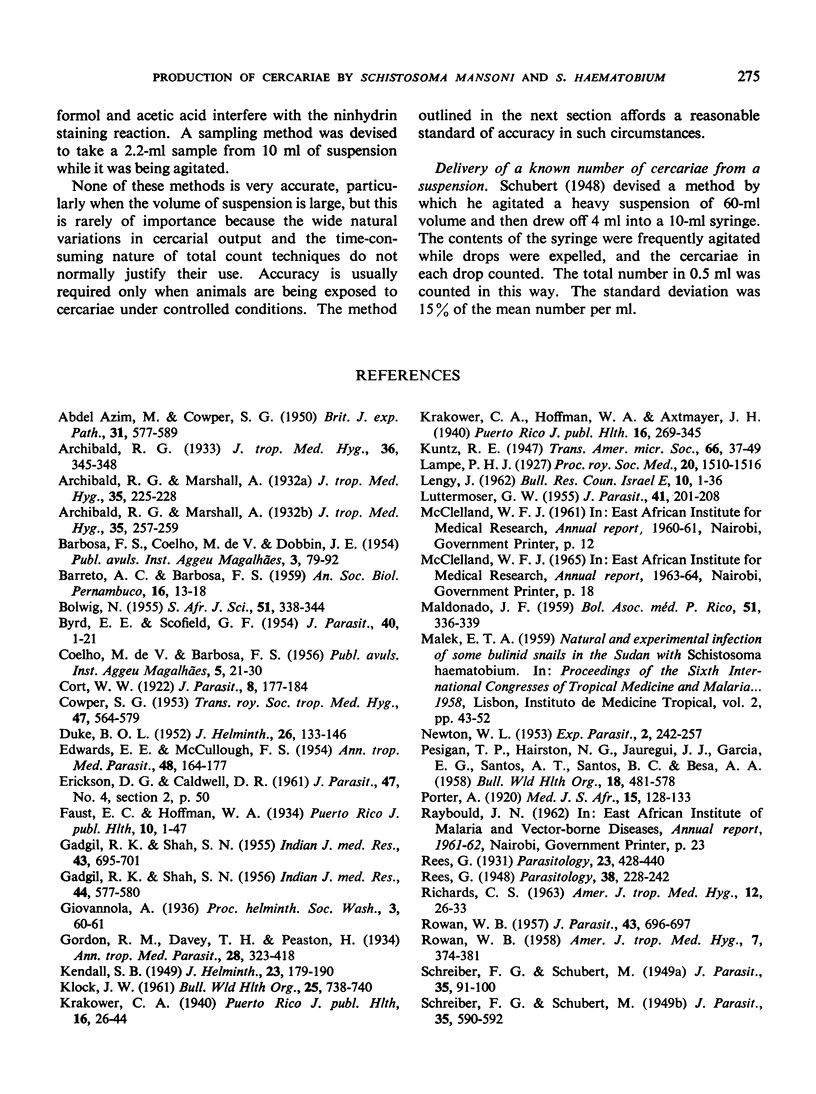
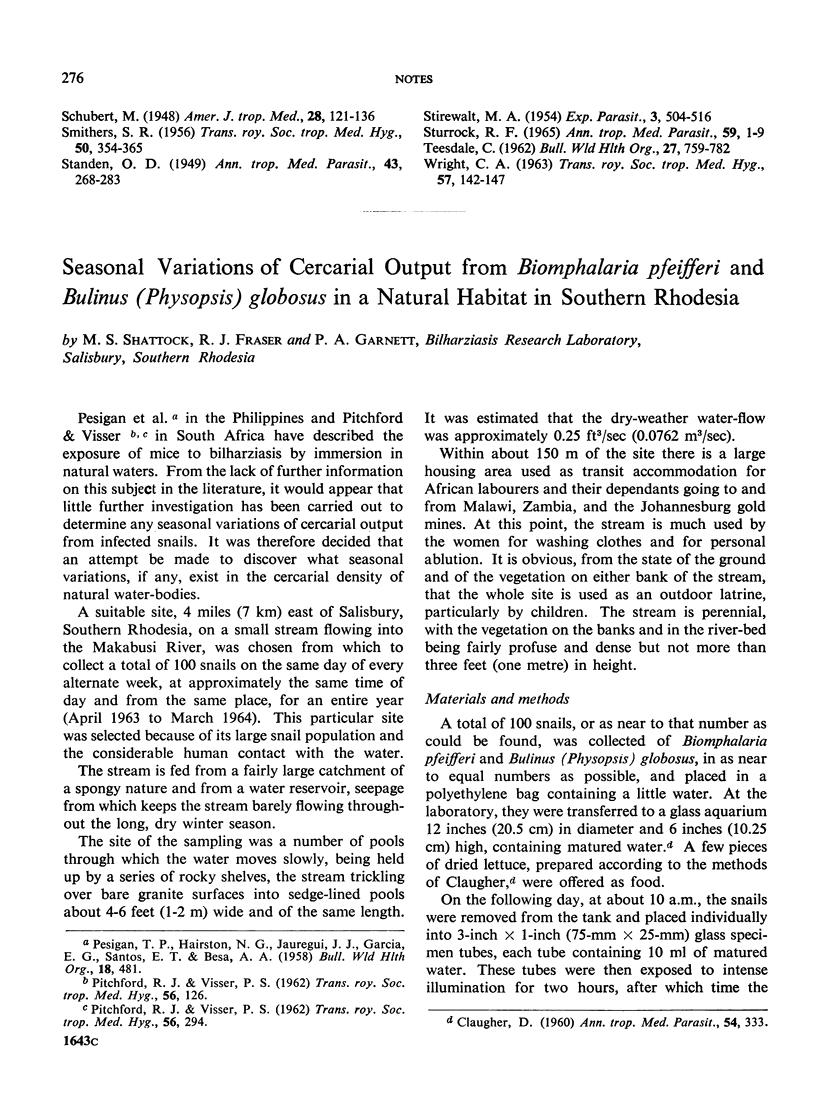
Selected References
These references are in PubMed. This may not be the complete list of references from this article.
- ABDEL AZIM M., COWPER S. G. On the maintenance of strains of Schistosoma mansoni, S. haematobium and S. matthei in the laboratory in Egypt, with special reference to the use of gerbils. Br J Exp Pathol. 1950 Oct;31(5):577–589. [PMC free article] [PubMed] [Google Scholar]
- BYRD E. E., SCOFIELD G. F. Developmental stages in the Digenea. III. Observations on the number of daughter sporocysts and cercariae produced in Physa gyrina as a result of single and multiple ochetosomatid egg-exposures. J Parasitol. 1954 Feb;40(1):1–21. [PubMed] [Google Scholar]
- COWPER S. G. Schistosomiasis in Mauritius. Trans R Soc Trop Med Hyg. 1953 Nov;47(6):564–579. doi: 10.1016/s0035-9203(53)80010-6. [DOI] [PubMed] [Google Scholar]
- EDWARDS E. E., McCULLOUGH F. S. Studies on the life-cycles of Schistosoma haematobium and S. mansoni in the Gold Coast. Ann Trop Med Parasitol. 1954 Jun;48(2):164–177. doi: 10.1080/00034983.1954.11685612. [DOI] [PubMed] [Google Scholar]
- GADGIL R. K., SHAH S. N. Human schistosomiasis in India. II. Infection of snails with Schistosoma hematobium. Indian J Med Res. 1955 Oct;43(4):695–701. [PubMed] [Google Scholar]
- GADGIL R. K., SHAH S. N. Human schistosomiasis in India. IV. Establishing the life cycle in the laboratory. Indian J Med Res. 1956 Jul;44(3):577–580. [PubMed] [Google Scholar]
- KENDALL S. B. Nutritional factors affecting the rate of development of Fasciola hepatica in Limnaea truncatum. J Helminthol. 1949;23(3-4):179–190. doi: 10.1017/s0022149x00032491. [DOI] [PubMed] [Google Scholar]
- KLOCK J. W. A method for the direct quantitative recovery of Schistosoma mansoni cercariae from natural waters of Puerto Rico. Bull World Health Organ. 1961;25:738–740. [PMC free article] [PubMed] [Google Scholar]
- LUTTERMOSER G. W. Studies on the chemotherapy of experimental schistosomiasis. III. Harvest of Schistosoma mansoni cercariae by forced nocturnal emergence from Australorbis glabratus. J Parasitol. 1955 Apr;41(2):201–208. [PubMed] [Google Scholar]
- Lampe P. H. The Development of Schistosoma mansoni. Proc R Soc Med. 1927 Jul;20(9):1510–1516. [PMC free article] [PubMed] [Google Scholar]
- MALDONADO J. F. The daily emergence of the cercaria of Schistosoma mansoni. Bol Asoc Med P R. 1959 Sep;51:336–339. [PubMed] [Google Scholar]
- PESIGAN T. P., HAIRSTON N. G., JAUREGUI J. J., GARCIA E. G., SANTOS A. T., SANTOS B. C., BESA A. A. Studies on Schistosoma japonicum infection in the Philippines. 2. The molluscan host. Bull World Health Organ. 1958;18(4):481–578. [PMC free article] [PubMed] [Google Scholar]
- RICHARDS C. S. Infectivity of Schistosoma mansoni for Puerto Rican mollusks, including a new potential intermediate host. Am J Trop Med Hyg. 1963 Jan;12:26–33. doi: 10.4269/ajtmh.1963.12.26. [DOI] [PubMed] [Google Scholar]
- ROWAN W. B. Daily periodicity of Schistosoma mansoni cercariae in Puerto Rican waters. Am J Trop Med Hyg. 1958 Jul;7(4):374–381. doi: 10.4269/ajtmh.1958.7.374. [DOI] [PubMed] [Google Scholar]
- SCHREIBER F. G., SCHUBERT M. Experimental infection of the snail Australorbis glabratus with the trematode Schistosoma mansoni and the production of cercariae. J Parasitol. 1949 Feb;35(1):91–100. [PubMed] [Google Scholar]
- SCHREIBER F. G., SCHUBERT M. Results of exposure of the snail Australorbis glabratus to varying numbers of miracidia of Schistosoma mansoni. J Parasitol. 1949 Dec;35(6):590–592. [PubMed] [Google Scholar]
- SMITHERS S. R. On the ecology of schistosome vectors in the Gambia, with evidence of their rôle in transmission. Trans R Soc Trop Med Hyg. 1956 Jul;50(4):354–365. doi: 10.1016/0035-9203(56)90044-x. [DOI] [PubMed] [Google Scholar]
- STANDEN O. D. Experimental schistosomiasis; maintenance of Schistosoma mansoni in the laboratory, with some notes on experimental infection with S. haematobium. Ann Trop Med Parasitol. 1949 Dec;43(3-4):268–283. [PubMed] [Google Scholar]
- STIREWALT M. A. Effect of snail maintenance temperatures on development of Schistosoma mansoni. Exp Parasitol. 1954 Nov;3(6):504–516. doi: 10.1016/0014-4894(54)90046-6. [DOI] [PubMed] [Google Scholar]
- STURROCK R. F. STUDIES ON THE BIOLOGY OF BIOMPHALARIA ANGULOSA MANDAHL-BARTH AND ON ITS ABILITY TO ACT AS AN INTERMEDIATE HOST OF SCHISTOSOMA MANSONI. Ann Trop Med Parasitol. 1965 Mar;59:1–9. doi: 10.1080/00034983.1965.11686274. [DOI] [PubMed] [Google Scholar]
- TEESDALE C. Ecological observations on the molluscs of significance in the transmission of bilharziasis in Kenya. Bull World Health Organ. 1962;27:759–782. [PMC free article] [PubMed] [Google Scholar]
- WRIGHT C. A. Schistosomiasis in the Western Aden protectorate. A preliminary study. Trans R Soc Trop Med Hyg. 1963 Mar;57:142–147. doi: 10.1016/0035-9203(63)90029-4. [DOI] [PubMed] [Google Scholar]


